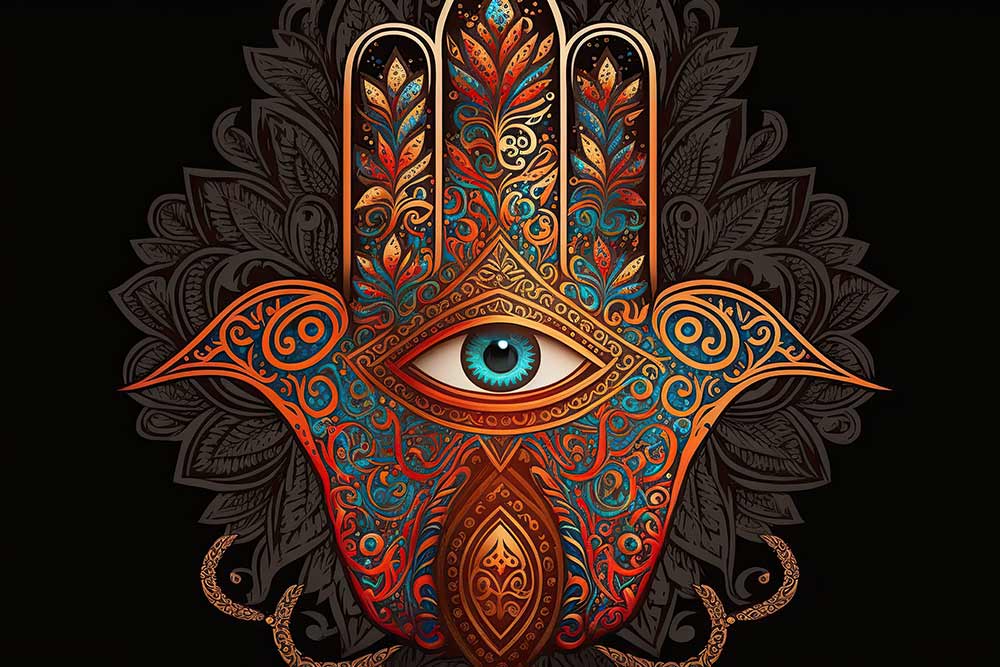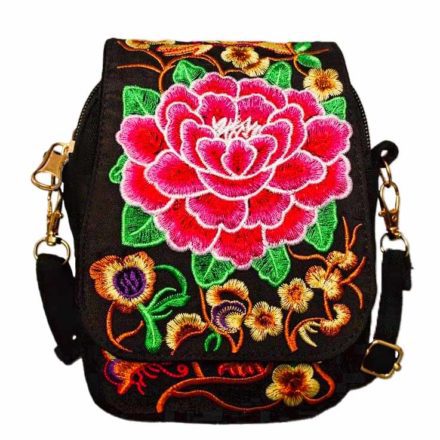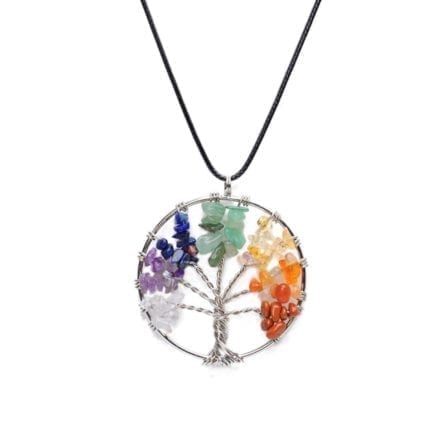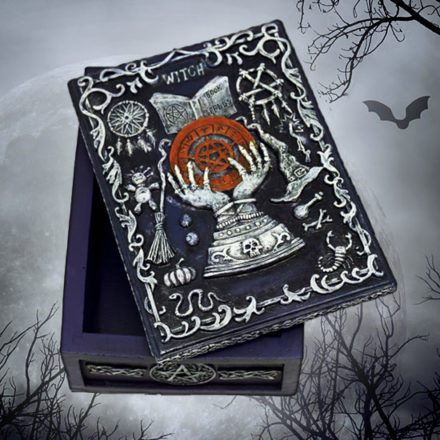Introduction to the Hamsa Hand
If you’ve ever been intrigued by the allure of ancient symbols and their hidden meanings, you’re in the right place. The Hamsa Hand, an enigmatic and captivating symbol, has been fascinating people for centuries. This mysterious icon has a rich history and a multitude of meanings, making it a popular choice for jewelry, tattoos, and artwork. In this blog post, we’ll dive deep into the world of the Hamsa Hand, exploring its origins, its meanings, and its spiritual and cultural significance.
The Hamsa Hand, also known as the Hand of Fatima or the Hand of Miriam, is an ancient symbol that has been a powerful protective talisman throughout history. It is believed to bring happiness, luck, health, and good fortune to those who possess it. The Hamsa Hand is often depicted as an open hand with an eye in the middle, symbolizing divine protection and warding off evil. The hand with eye meaning holds special significance in many cultures and religions, making it a truly universal symbol.
As with many ancient symbols, the Hamsa Hand has an air of mystery that continues to captivate and intrigue us. Its origins are shrouded in the mists of time, and its meanings are as varied as the cultures that have embraced it. In the following sections, we’ll explore the enchanting world of the Hamsa Hand, unlocking its secrets and discovering its many facets.
The Origins of the Hamsa Hand
The Hamsa Hand has a long and storied history that spans cultures and continents. Its exact origins are unclear, as it predates both the Islamic and Jewish faiths, but it is believed to have originated in the ancient Middle East. Some scholars attribute its creation to the Phoenicians, who revered the hand as a symbol of the goddess Tanit. Others believe it may have originated in ancient Egypt as a symbol of the Eye of Horus, which represented protection, royal power, and good health.
Over time, the Hamsa Hand has been adopted and adapted by various cultures and religions, each imbuing it with their own unique meanings and significance. In Islamic tradition, the Hamsa Hand is known as the Hand of Fatima, named after the daughter of the Prophet Muhammad, and is believed to protect against the evil eye. In Jewish tradition, the Hamsa Hand is called the Hand of Miriam, after the sister of Moses and Aaron, and is thought to bring blessings and protection.
The Hamsa Hand has also found its way into Christian symbolism, where it is sometimes referred to as the Hand of Mary. In this context, the Hamsa Hand is seen as a symbol of divine protection and blessings from the Virgin Mary. With its rich and varied history, the Hamsa Hand stands as a testament to the universality of human desire for protection, blessings, and good fortune.
You may also like…
Exploring the Hamsa Hand Meaning
As we delve deeper into the meanings of the Hamsa Hand, it becomes clear that this enigmatic symbol holds a myriad of interpretations. The hand with eye meaning is perhaps the most recognizable aspect of the Hamsa Hand, symbolizing divine protection from evil forces. The eye is thought to represent the watchful gaze of a higher power, guarding against negative energy and harm.
In addition to its protective qualities, the Hamsa Hand is also believed to bring blessings, fortune, and good health. The five fingers of the hand are thought to symbolize the five pillars of Islam in Islamic tradition, or the five books of the Torah in Jewish tradition. In both cases, the Hamsa Hand represents a connection to the divine and a reminder of the importance of faith and spirituality.
The Hamsa Hand can also be seen as a symbol of unity and harmony, as it transcends religious and cultural boundaries. Its presence in multiple faiths and traditions speaks to a common human desire for protection, blessings, and connection to the divine. The Hamsa Hand reminds us that, despite our differences, we all share a common spiritual journey and a universal need for guidance and support.
Hamsa Hand Spiritual Meaning and Cultural Significance
The spiritual and cultural significance of the Hamsa Hand is as varied and rich as its history. In many cultures, the Hamsa Hand is seen as a symbol of divine protection, guarding against evil spirits and negative energy. In this context, the Hamsa Hand is often used as a talisman or amulet to ward off evil and bring good fortune and blessings.
In Islamic culture, the Hamsa Hand is closely associated with the Hand of Fatima, the daughter of the Prophet Muhammad. It is believed that Fatima’s hand protected her family from harm and brought them blessings and good fortune. As a result, the Hamsa Hand is often used in Islamic art and architecture as a symbol of divine protection and as a reminder of the importance of faith and spirituality.
In Jewish tradition, the Hamsa Hand is known as the Hand of Miriam, after the sister of Moses and Aaron. The Hamsa Hand is believed to represent the hand of God, offering protection and guidance to the faithful. In this context, the Hamsa Hand is often used in Jewish art, jewelry, and ritual objects, serving as a constant reminder of the divine presence in our lives.
Hamsa Hand Tattoo Designs and Meanings
Given its rich history and powerful symbolism, it’s no surprise that the Hamsa Hand has become a popular choice for tattoos. A Hamsa Hand tattoo can be a beautiful and meaningful way to express one’s faith, spirituality, or desire for protection and good fortune. The design possibilities for a Hamsa Hand tattoo are virtually limitless, as the symbol can be adapted and personalized to suit individual tastes and preferences.
Some popular Hamsa Hand tattoo designs incorporate elements of nature, such as flowers, leaves, or celestial bodies, to emphasize the connection between the divine and the natural world. Others may choose to incorporate religious symbols, such as the Star of David, a crescent moon, or a cross, to highlight the Hamsa Hand’s spiritual significance in their own faith tradition.
A Hand of Fatima tattoo can be a powerful reminder of the strength and resilience of women, as Fatima was known for her wisdom, courage, and devotion to her family. Similarly, a Hand of Miriam tattoo can serve as a symbol of divine guidance and protection, reminding us of the ever-present support of a higher power.
The Protective Power of the Hamsa Hand
At the heart of the Hamsa Hand’s enduring appeal lies its protective power. Throughout history, the Hamsa Hand has been revered as a potent talisman, capable of warding off evil and bringing blessings and good fortune. The hand with eye meaning has become synonymous with divine protection and the watchful gaze of a higher power, guarding against harm and negative energy.
In many cultures, the Hamsa Hand is used as a protective amulet, often hung in homes, vehicles, or worn as jewelry. It is believed that the Hamsa Hand can deflect the evil eye, a negative force thought to cause misfortune and suffering. By carrying or displaying a Hamsa Hand, one is thought to be shielded from the harmful effects of negative energy and protected from harm.
The Hamsa Hand’s protective power is not limited to physical well-being; it is also thought to guard one’s spiritual and emotional health. By acting as a reminder of the divine presence in our lives, the Hamsa Hand encourages us to maintain a strong spiritual connection and fosters a sense of inner peace and balance.
Incorporating the Hamsa Hand into Your Life
With its rich history, powerful symbolism, and universal appeal, the Hamsa Hand is an ideal addition to anyone’s spiritual or personal journey. There are countless ways to incorporate the Hamsa Hand into your life, whether you choose to wear it as jewelry, display it as artwork, or embrace its protective power as a talisman.
Wearing Hamsa Hand jewelry, such as necklaces, bracelets, or earrings, can be a beautiful and meaningful way to keep the symbol close and benefit from its protective qualities. The Hamsa Hand can also be used as a decorative element in your home, serving as a constant reminder of the divine presence and a source of inspiration and spiritual strength.
For those looking to delve deeper into the world of ancient symbols and their meanings, a Hamsa Hand tattoo can be a powerful and personal expression of faith, spirituality, or the desire for protection and blessings. With its rich history and myriad interpretations, the Hamsa Hand offers endless possibilities for self-expression and spiritual growth.
Conclusion: The Enchanting Allure of the Hamsa Hand
The Hamsa Hand, with its captivating history and powerful symbolism, continues to enchant and fascinate us. As a symbol of protection, blessings, and divine guidance, the Hamsa Hand has transcended religious and cultural boundaries, becoming a truly universal symbol. Whether you choose to wear it as jewelry, display it as artwork, or embrace its protective power as a talisman, the Hamsa Hand can be a meaningful and inspiring addition to your spiritual journey.
So, if you’re ready to explore the mysterious world of the Hamsa Hand and unlock its secrets, there’s no better time than now. Discover the enchanting allure of the Hamsa Hand and let it guide you on your path to spiritual growth and personal fulfillment.









